Perseid meteor shower
Categories: Space
By Pictolic https://pictolic.com/article/perseid-meteor-shower.htmlIs there a falling star in the night sky? Make your most cherished wish! And every August, for almost a month, you can make up to a hundred wishes a night, or even more! After all, our planet will be “bombarded” by falling meteorites for several weeks, which in astronomy are called meteor showers or the Perseid stream. This year, the number of meteors will reach the “above average” mark, and this will truly be an exciting event for sky watchers from all over the world.
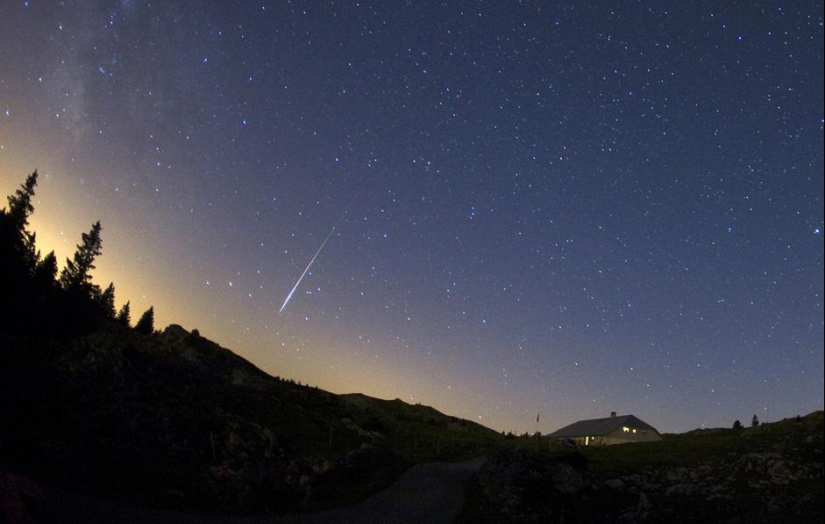
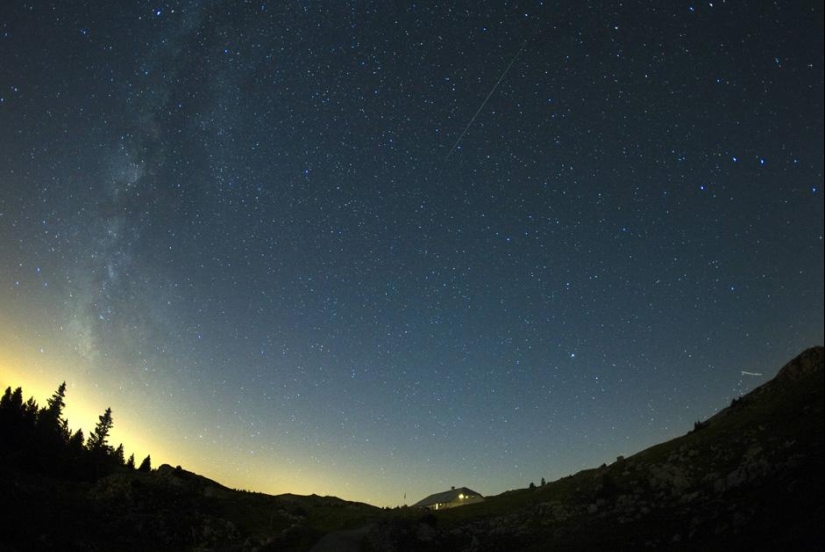 The Perseids are observed from July 17 to August 24, this year the number of meteors reached its maximum on the night of August 12. The summer meteor shower, rich in bright fireballs, is considered the most popular among fans of such phenomena in the Northern Hemisphere - away from city lights, in clear weather, it can be observed all night. This picture was taken using a long exposure and a fisheye lens.
The Perseids are observed from July 17 to August 24, this year the number of meteors reached its maximum on the night of August 12. The summer meteor shower, rich in bright fireballs, is considered the most popular among fans of such phenomena in the Northern Hemisphere - away from city lights, in clear weather, it can be observed all night. This picture was taken using a long exposure and a fisheye lens.
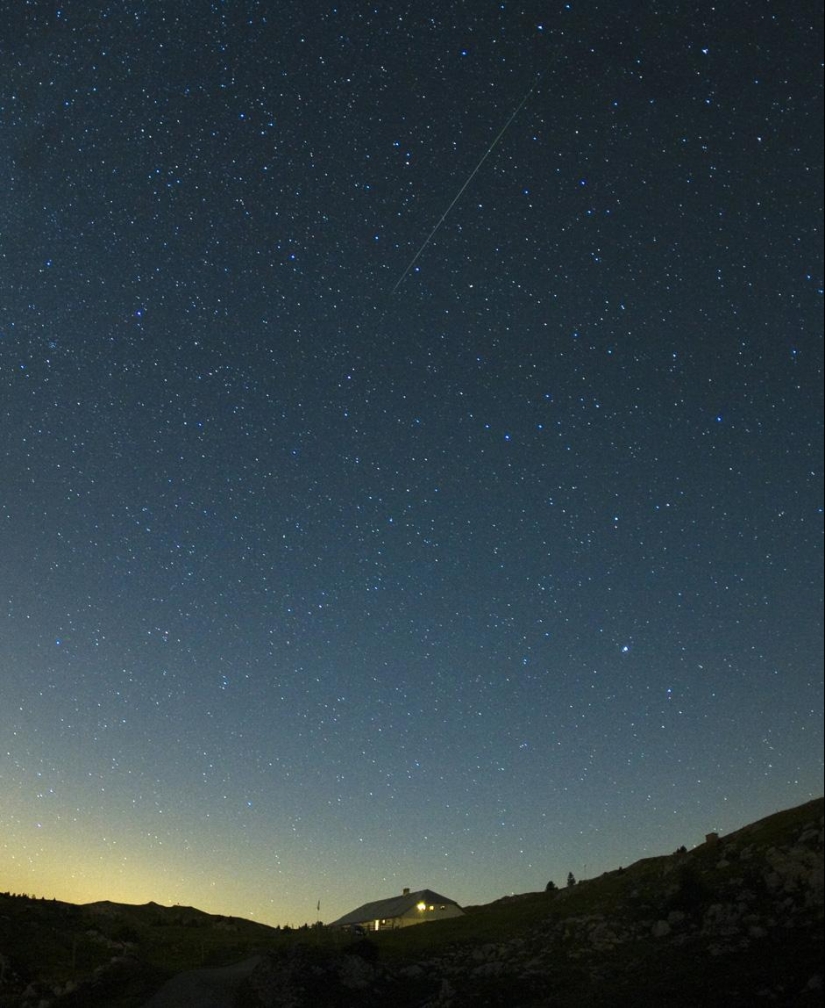 The Earth's surface is constantly bombarded by celestial bodies of all sizes. When they rub against the atmosphere, the particles heat up and burn or evaporate, leaving behind a bright trace - a meteor.
The Earth's surface is constantly bombarded by celestial bodies of all sizes. When they rub against the atmosphere, the particles heat up and burn or evaporate, leaving behind a bright trace - a meteor.
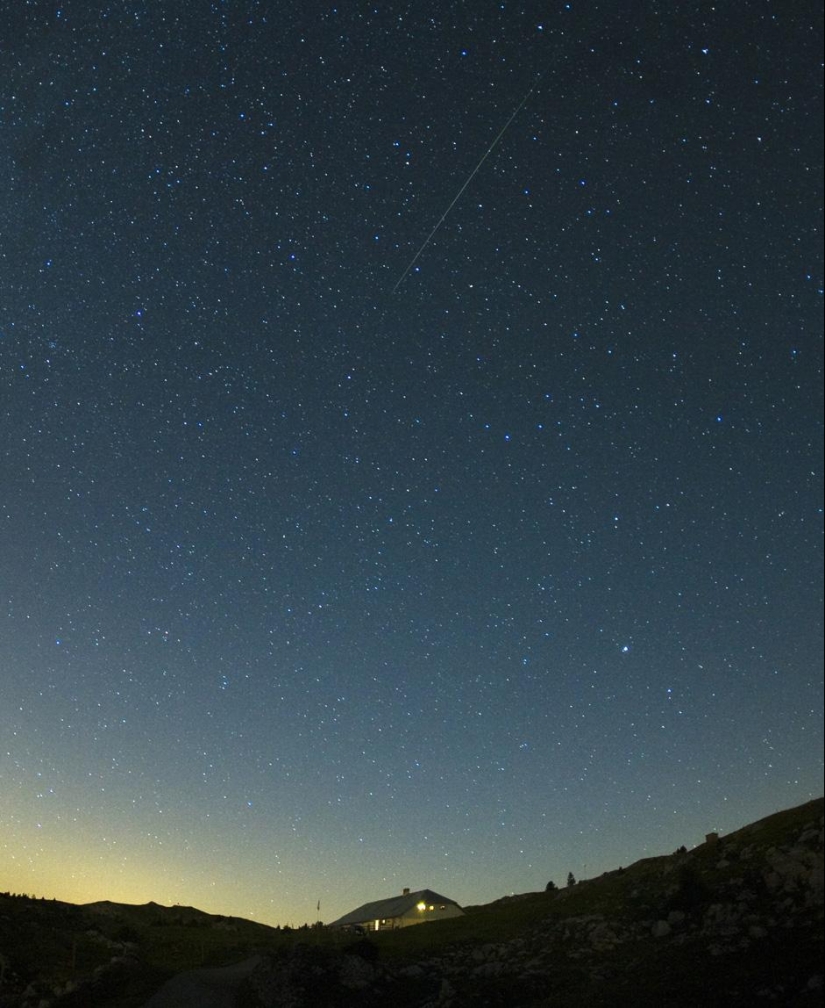 A meteor is a light phenomenon that occurs at an altitude of 80 km to 130 km from the Earth's surface when particles - meteoric bodies - enter the Earth's atmosphere.
A meteor is a light phenomenon that occurs at an altitude of 80 km to 130 km from the Earth's surface when particles - meteoric bodies - enter the Earth's atmosphere.
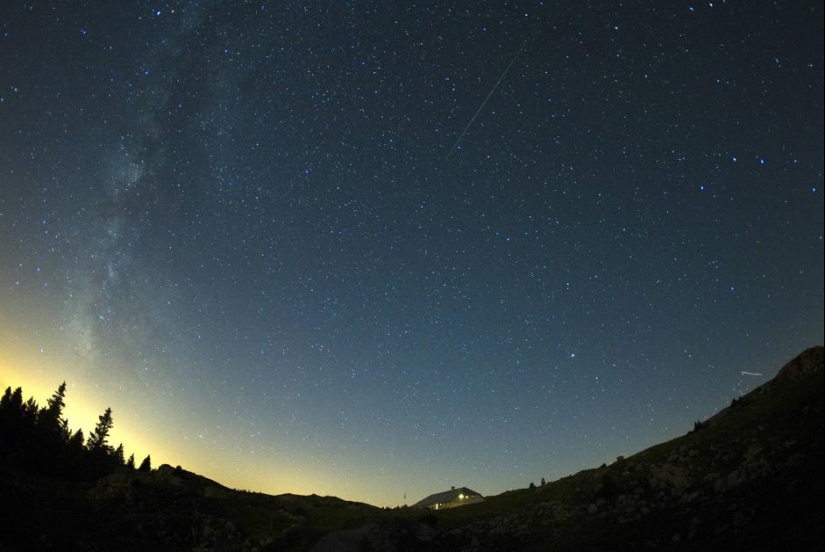 The speed of movement of meteor bodies varies from 11 to 75 km/s. In addition to individual, sporadic meteors, meteor showers can also be observed.
The speed of movement of meteor bodies varies from 11 to 75 km/s. In addition to individual, sporadic meteors, meteor showers can also be observed.
 A meteorite enters the Earth's atmosphere during the Perseid meteor shower in northeastern Switzerland.
A meteorite enters the Earth's atmosphere during the Perseid meteor shower in northeastern Switzerland.
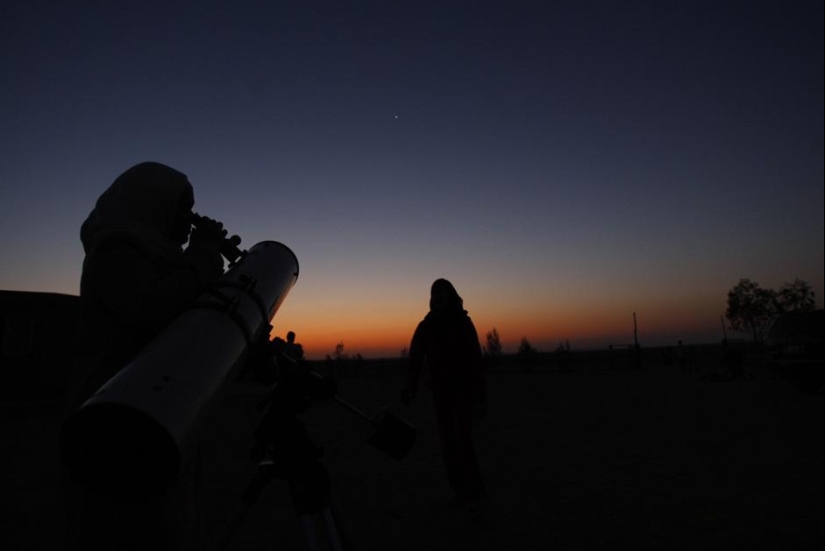 People gathered to watch the Perseid meteor shower in the desert near Amman.
People gathered to watch the Perseid meteor shower in the desert near Amman.
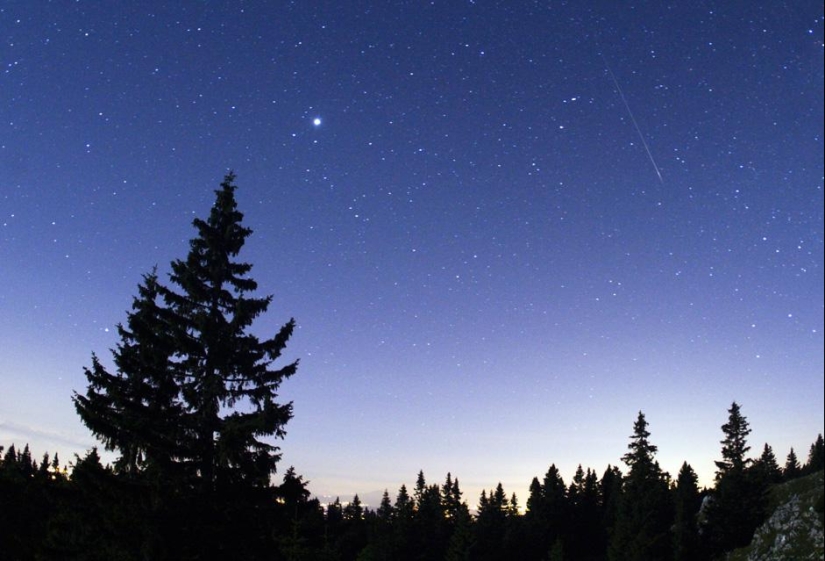 Meteor streaks against a starry backdrop in the night sky over Mont Tendre, north of Geneva.
Meteor streaks against a starry backdrop in the night sky over Mont Tendre, north of Geneva.
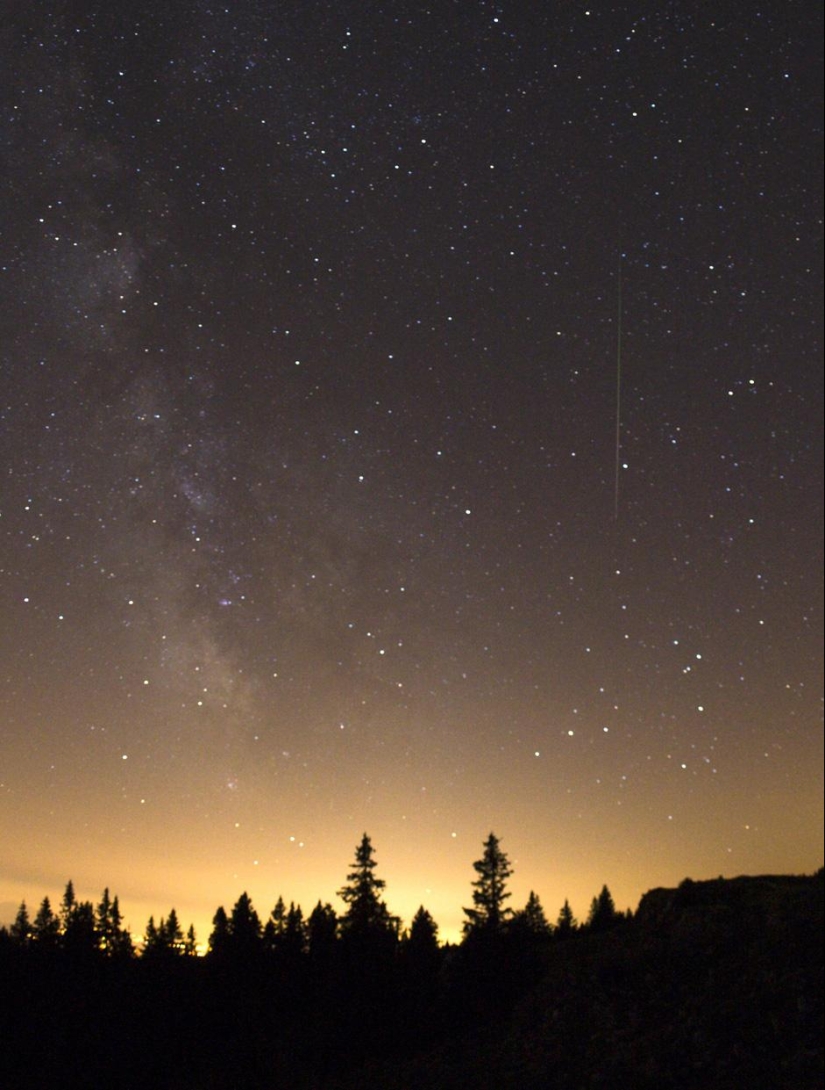 The August meteors are fragments of Comet Swift-Tuttle. Discovered in 1862, the comet took approximately 130 years to orbit the sun.
The August meteors are fragments of Comet Swift-Tuttle. Discovered in 1862, the comet took approximately 130 years to orbit the sun.
 And much like Comet Tempel-Tuttle, which left a trail of debris along its orbit (which can be seen in November as the spectacular Leonids), Comet Swift-Tuttle will leave a similar trail that is visible from our planet as the Perseids.
And much like Comet Tempel-Tuttle, which left a trail of debris along its orbit (which can be seen in November as the spectacular Leonids), Comet Swift-Tuttle will leave a similar trail that is visible from our planet as the Perseids.
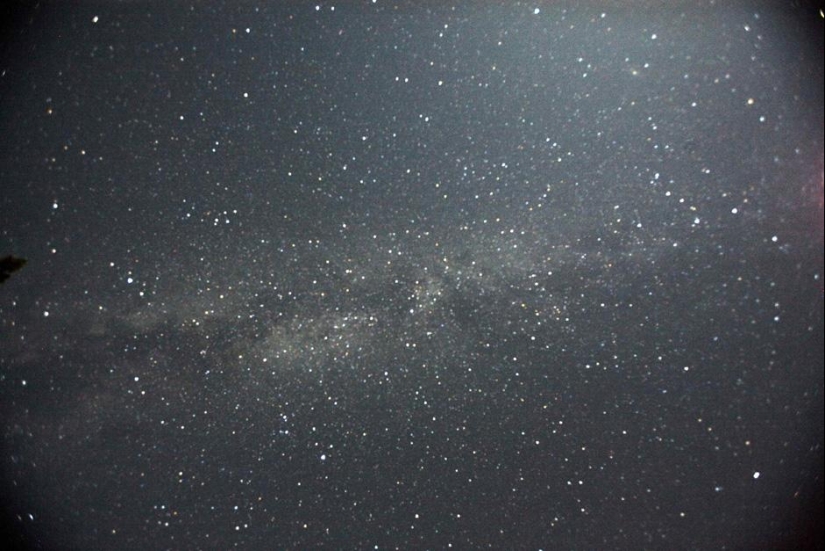 The Milky Way during the Perseid meteor shower over Los Padres National Park in California.
The Milky Way during the Perseid meteor shower over Los Padres National Park in California.
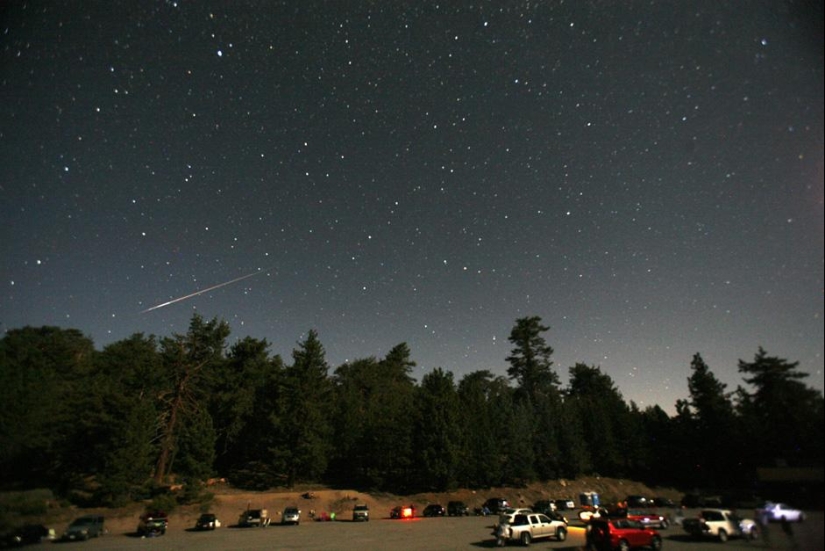 Every year in mid-August, as Earth comes close to Swift-Tuttle's orbit, debris and dust left behind by the comet slams into our atmosphere at approximately 60 kilometers per second, creating bright streaks of light in our midsummer night skies.
Every year in mid-August, as Earth comes close to Swift-Tuttle's orbit, debris and dust left behind by the comet slams into our atmosphere at approximately 60 kilometers per second, creating bright streaks of light in our midsummer night skies.
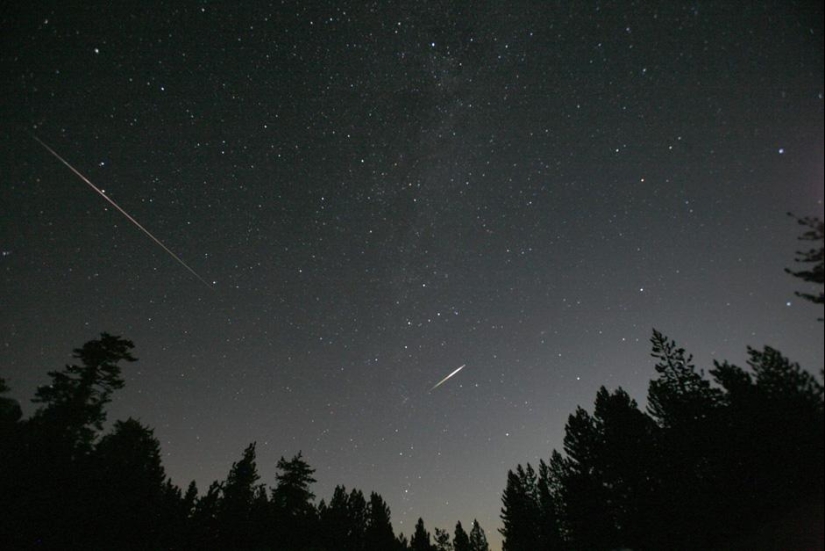 The constellation Perseus rises close to the zenith in the evening, so it will be convenient to observe. The meteor shower can be seen from 22:00 to 01:00.
The constellation Perseus rises close to the zenith in the evening, so it will be convenient to observe. The meteor shower can be seen from 22:00 to 01:00.
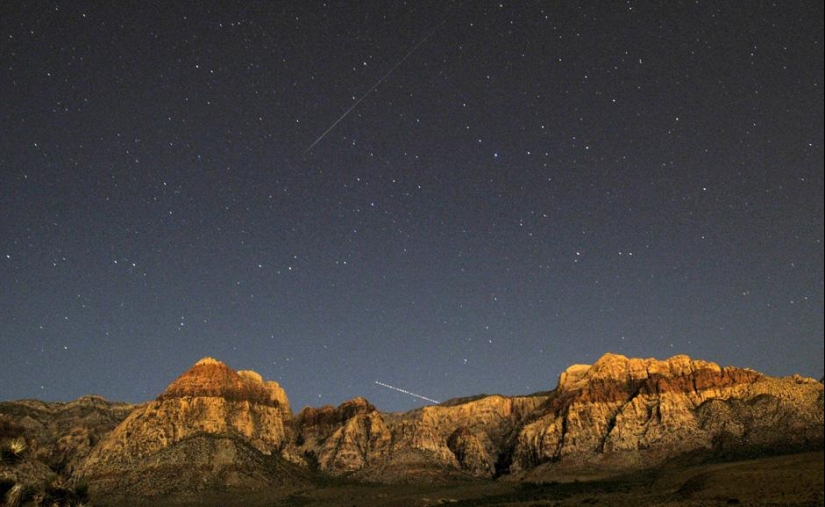 A Perseid meteor (top) and jet trail over the cliffs of Red Rock Canyon near Las Vegas.
A Perseid meteor (top) and jet trail over the cliffs of Red Rock Canyon near Las Vegas.
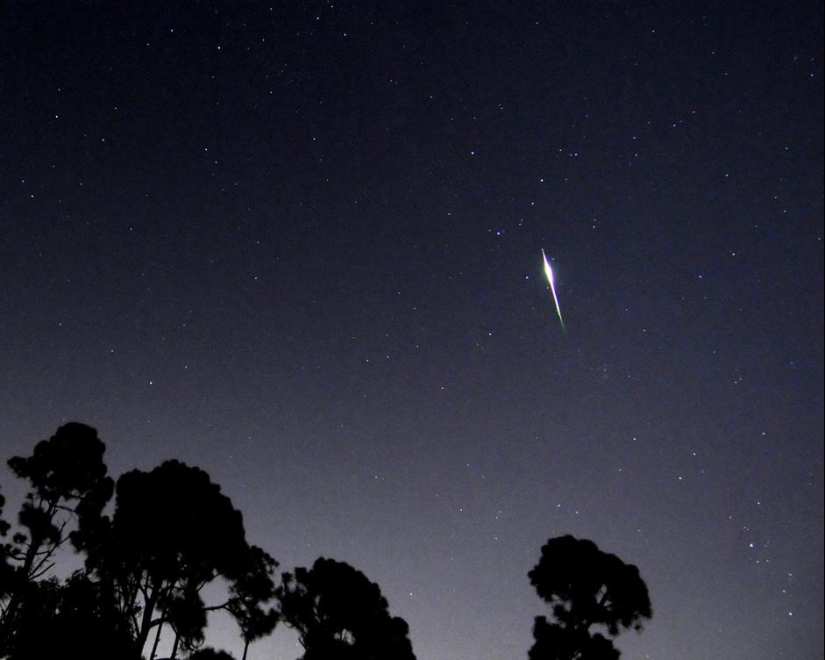 A Perseid meteor in the sky over Palm Beach Gardens. Unfortunately, this year the Perseids are being hampered by the waning moon, which is visible just during the hours of maximum activity of the shower. However, the bright light of the moon will mostly interfere with the observation of dim meteors, while bright and spectacular ones will be visible without any problems.
A Perseid meteor in the sky over Palm Beach Gardens. Unfortunately, this year the Perseids are being hampered by the waning moon, which is visible just during the hours of maximum activity of the shower. However, the bright light of the moon will mostly interfere with the observation of dim meteors, while bright and spectacular ones will be visible without any problems.
Recent articles

Most of us think that the color of the eggshell does not play any role and it is possible not to pay attention. But it's not and ...

The more we rely on technology, the more potential power hackers gain over us. It doesn't matter if their goal is to help or cause ...

Creating a good portrait is one of the most difficult tasks for any photographer. In order to make a really natural and memorable ...